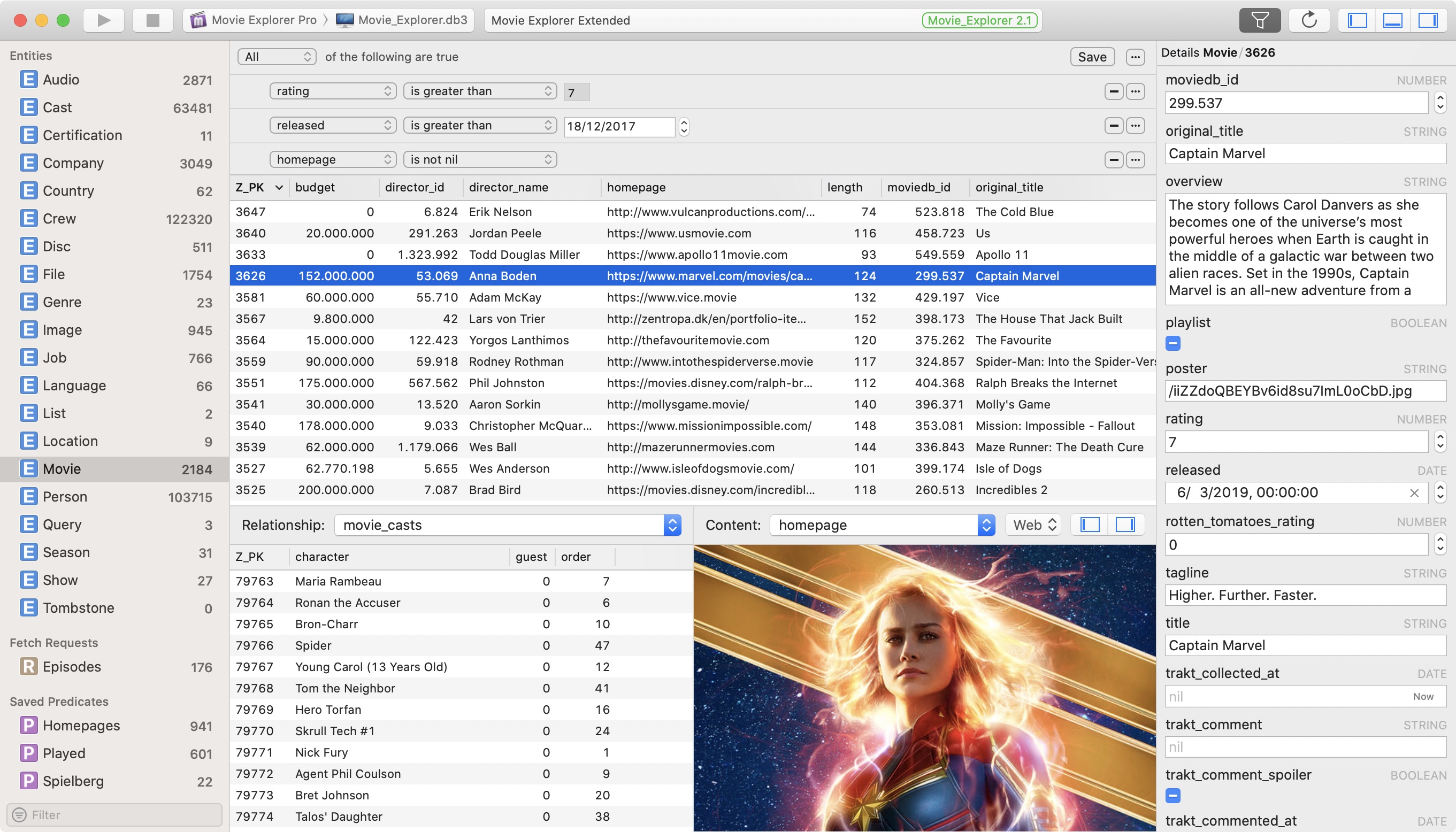News Explorer 1.9.11 for iOS: Widgets and more
Version 1.9.11 of News Explorer for iOS contains several iOS 14 compatibility improvements, including support for widgets, and some other useful new features.
System features
This update contains the following new system related features:
- Widgets support: You can now add News Explorer widgets to the Home Screen and Today View. All three standard sizes are supported, and because you can add multiple widgets, you can also customize the source for each widgets, as well the font and thumbnail display. As source you can choose between smart filters, folders or feeds. Tapping an article on the widget will open the article in News Explorer. The widgets are updated by the app as part of each sync procedure, including the sync performed in background app refresh.
- Delete notifications of read items: This is a new option in the General section of the News Explorer Preferences. When you mark an item as read in News Explorer, the related notification in the Notification Center will be removed, when this new setting is enabled.
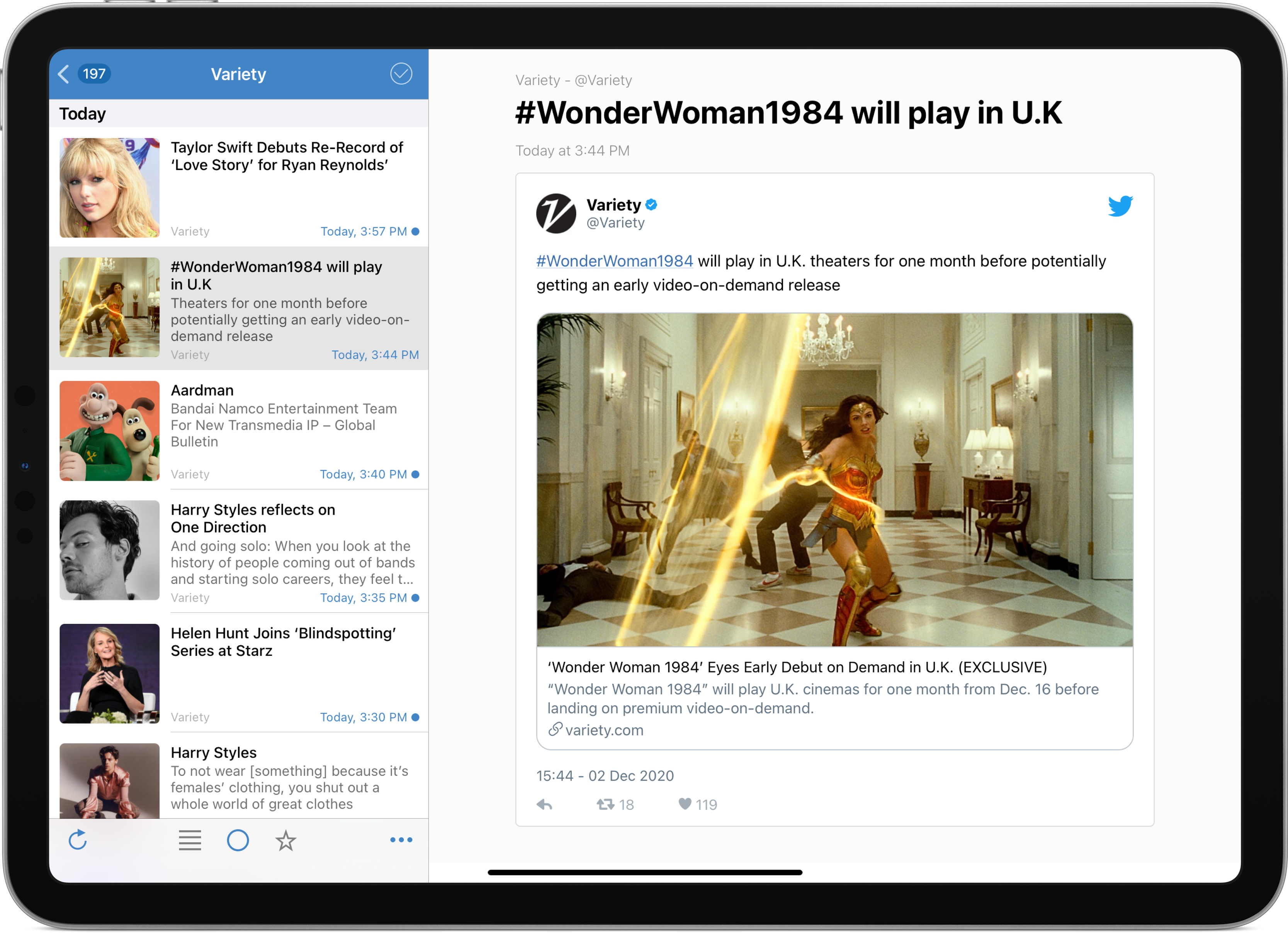
News Explorer 1.9.11 for macOS: Apple Silicon support
Version 1.9.11 of News Explorer for macOS is the first Betamagic app that runs natively on Apple Silicon Macs. The app is compiled as a so called Universal App, which means that the app runs natively on both Apple Silicon and Intel Macs.
Big Sur changes
The following changes are specific for macOS 11 users:
- Notification Center widgets: Widgets are very popular on iOS 14, and are also available in macOS 11 Big Sur. The impact on macOS 11 will likely be less, because the widgets are located in the Notification Center which is not, and cannot be made, permanently visible. The new News Explorer widgets in macOS 11 are nearly identical to the widgets that will be introduced in the next update of the iOS edition of News Explorer.
- New toolbar icons: Most toolbar icons are now replaced by variants of the SF Symbols collection. This is the standardized icon family designed by Apple, and with the introduction of Big Sur it′s now also available for macOS apps.
- Visual adjustments: A lot of other small changes have been made to make the user interface more compatible with the visual Big Sur changes. More dramatic changes are planned for News Explorer 2.0, which will use the full design language of Big Sur.

Movie Explorer Pro 2.2: Frequently asked enhancements
Movie Explorer Pro 2.2 contains small adjustments to make it compatible with macOS 11 Big Sur, some frequently asked enhancements, and a few bug fixes.
New features
The following new features have been added to Movie Explorer Pro:
- Add discs without barcode: you can now add digital discs without a barcode. To do this, choose File > Add Single Disc in the menu, and add the title of the movie, TV show or collection, instead of the barcode. Click the Search button to continue with the addition process.
- Adjustable disc covers: covers of digital discs can now be individually changed. This means that when you have multiple discs of one movie, you can assign different covers to each disc. To change a disc cover, choose Select Cover from the context menu, or simply click on the preview image in the Inspector panel or Disc editor window.
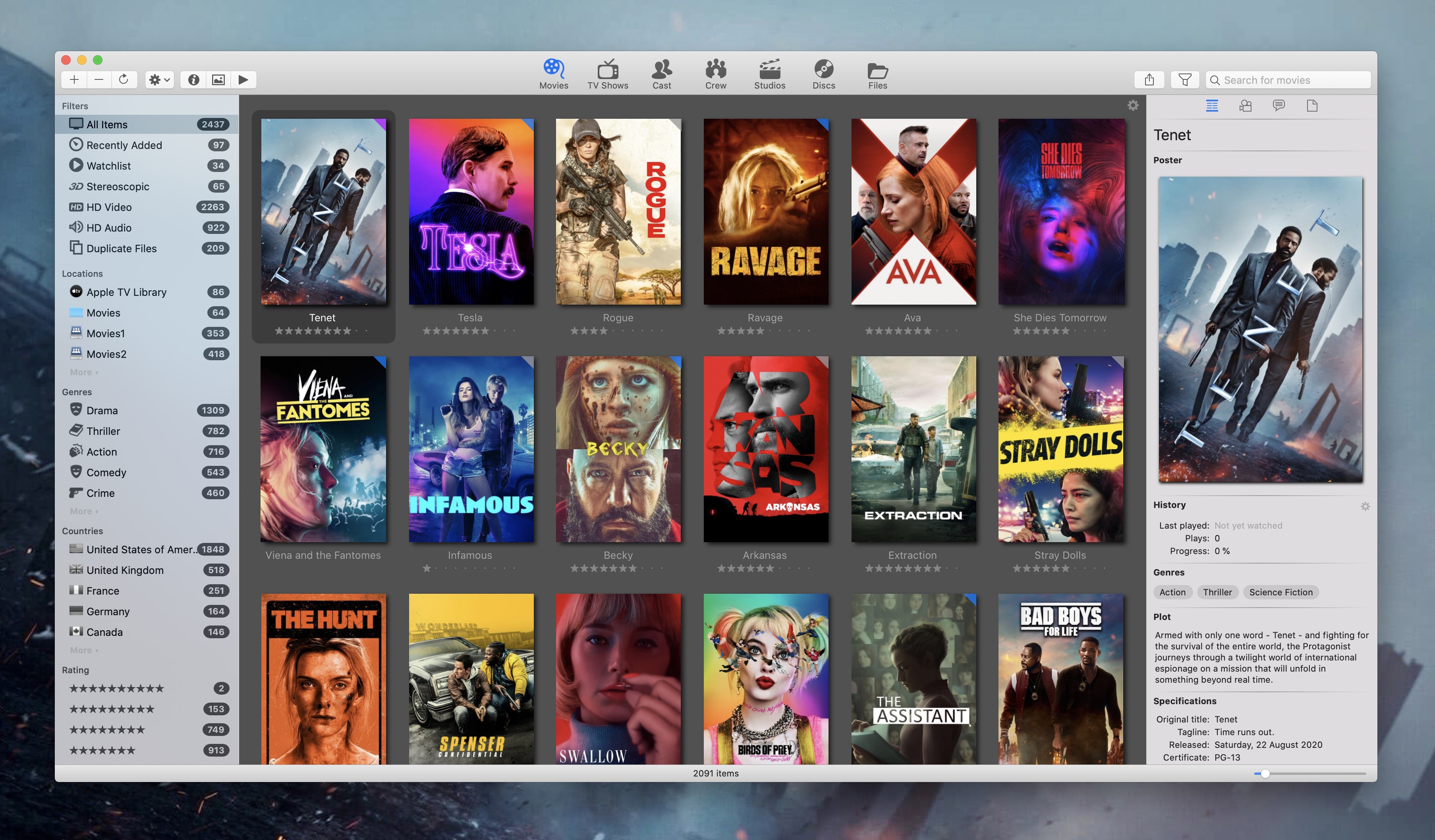
Core Data Lab 1.2: App Data Containers, and more
Version 1.2 of Core Data Lab fixes some visual glitches when using the app with the current beta version of macOS 11 Big Sur, and contains some handy new features plus a few bug fixes.
New features
The following features are new in Core Data Lab 1.2:
- App Data Container support: you can now directly open App Data Container files (with .xcappdata extension) generated by Xcode, via menu File > Open Container in Core Data Lab or by using the context menu in Finder. When the container file contains one database, then it will be automatically opened, in case of multiple databases a selection list will be presented.
- Store Metadata: the metadata of the Core Data database can now be inspected via menu File > Store Metadata. Not only the official Core Data metadata items are being shown, but also custom items added in code by the developer.
- NSPersistentHistoryTracking support: if the selected database already contains history tracking data, then you can enable NSPersistentHistoryTracking, which makes the database editable in Core Data Lab. This setting can be found in the Project Settings sheet, which can be opened from the File menu.
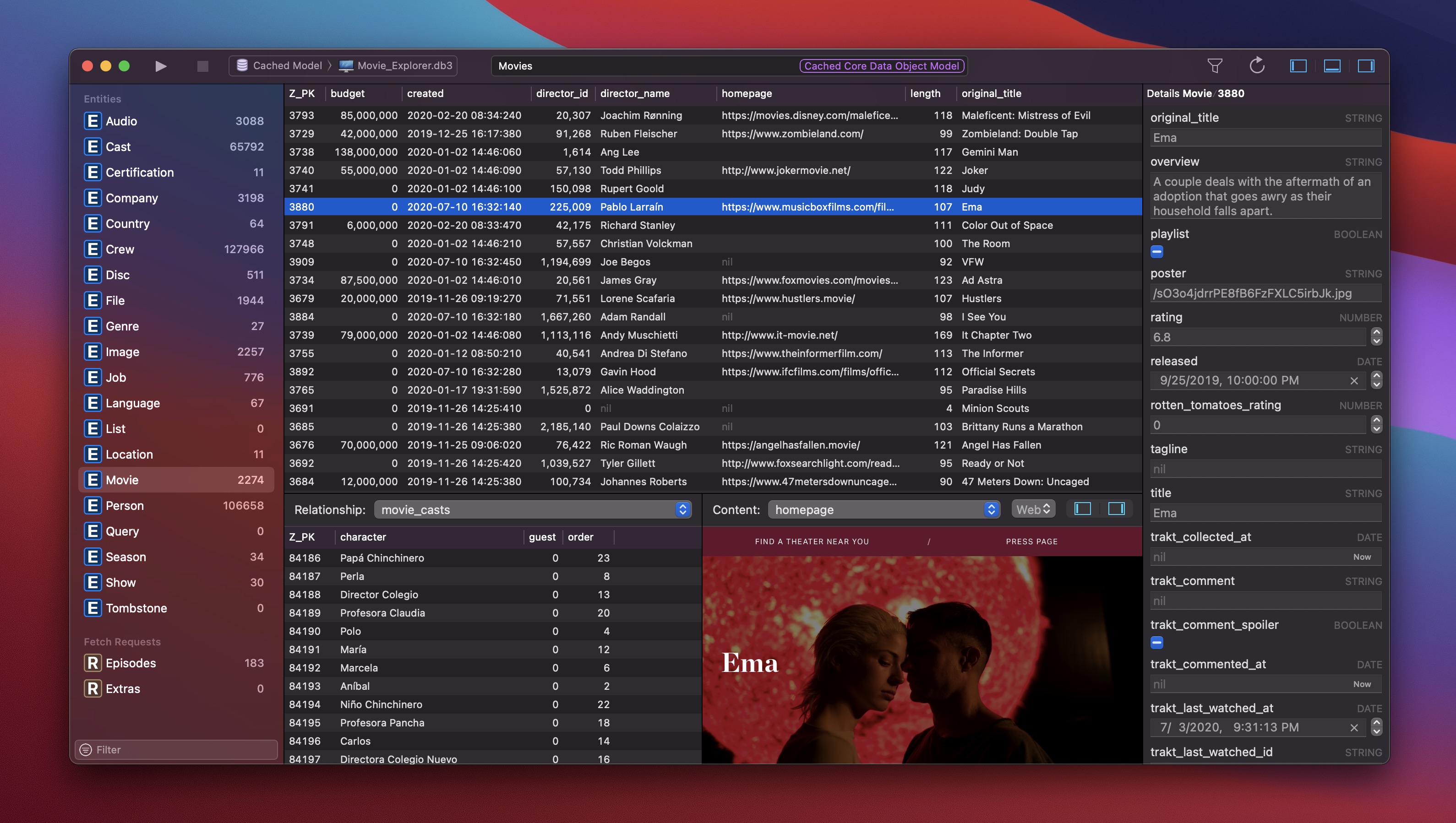
News Explorer 1.9.10: Database backup and restore & more
Version 1.9.10 of News Explorer is an all-platform update with several important improvements in the macOS and iOS editions, and restored support for syncing more than 1000 feeds via iCloud on all platforms.
macOS
The macOS edition of News Explorer contains the following new features and improvements:
- Database backup and restore: you can now backup and restore the database of News Explorer within the app. Restoring the database includes restoring the data in iCloud. We have made a special Backup help page. Please read it before you start using this new feature.
- Automatic Reader view: this feature was already implemented in the iOS edition, and this is how it was described in the release notes of News Explorer 1.9.8 for iOS:
News Explorer now supports Automatic Reader view: when enabled, News Explorer automatically chooses the correct processing for each article, in order to show the full article.

Movie Explorer Pro 2.1.2: Compatibility update
Movie Explorer Pro 2.1.2 fixes some compatibility and other issues with TMDb and with iTunes, or the Apple TV app if you are using Catalina.
Missing posters fix
As part of a maintenance project of TMDb, a lot of posters and other artwork has been deleted. This may lead to missing thumbnails in Movie Explorer, especially for movies and TV shows older than 2 years. The following has been implemented in Movie Explorer, to deal with the image deletions of TMDb:
- Automatic poster updates: Movie Explorer will now automatically search for an alternative image when the image reference stored in the catalog is no longer available in the local cache or on the TMDb image server.
- Batch update: all posters for movies, TV shows and discs can also be updated in one operation. To to this, choose
File>Update Postersin the menu. There are two poster update options:- Update missing images: this will only update the images that cannot be found in the local image cached or that cannot be downloaded from the TMDb images server, using the image reference in the catalog.
- Overwrite all images: this will update all poster art for the selected categories. Use this option if you want to export your catalog to PDF or HTML.
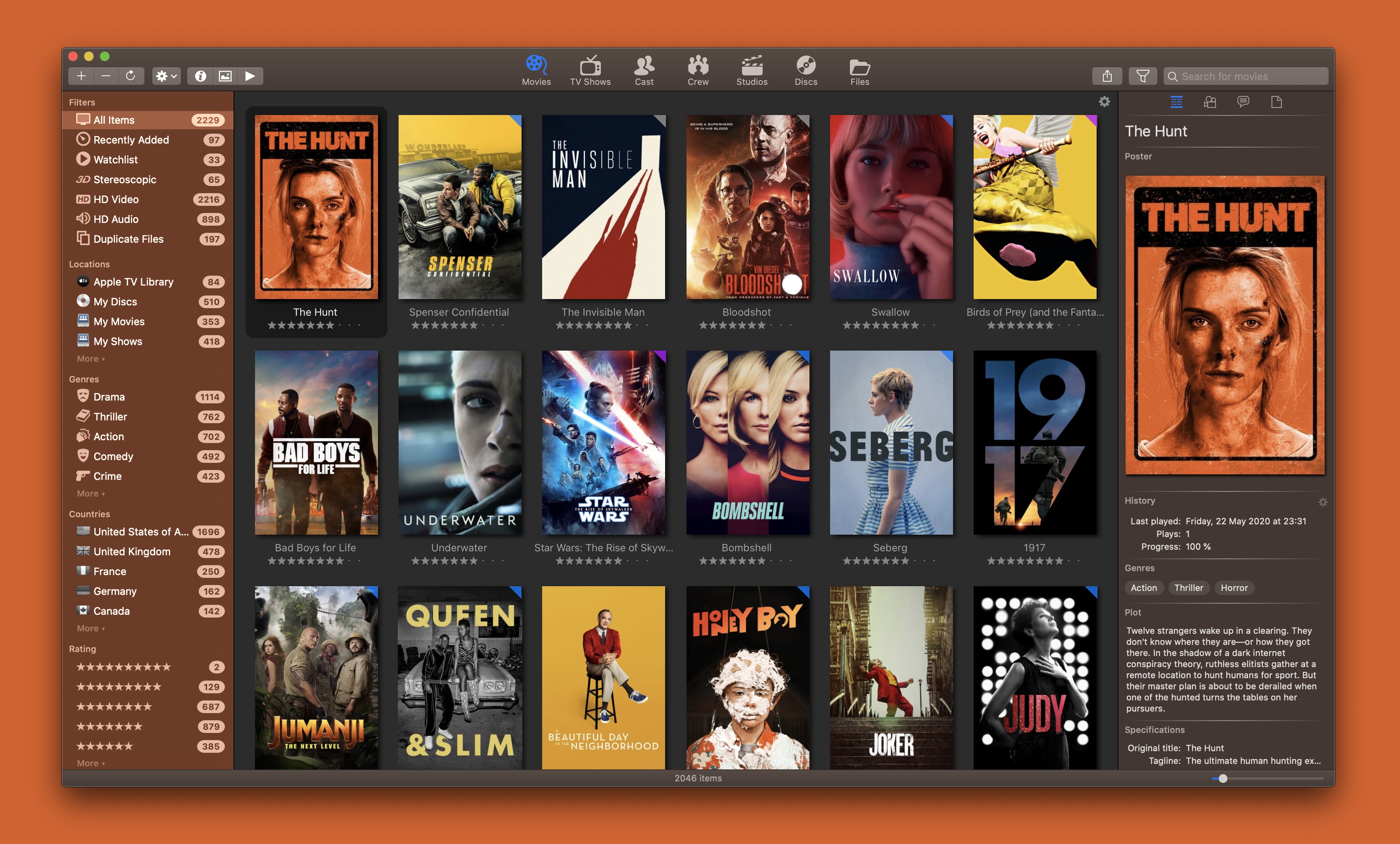
Core Data Lab 1.1: Cached object models, and much more
Version 1.1 of Core Data Lab contains a mix of some new ‘must-have’ features, some fixes to cover exotic Core Data ‘use cases’, and new features that wouldn’t exist without the feedback of a few seasoned Core Data developers.
New features
The following features are new in Core Data Lab 1.1:
- Object creation functions: the Data menu has been extended with a ’New Object’ menu item to add new objects for the selected entity, and a ’New Related Object’ menu item to add new objects for the selected Core Data relationship.
- Core Data Model Cache option: the Core Data Object Model that’s cached in the database can now be used as object model in a Core Data Lab project. This is especially useful for developers that generates their object models during runtime (yes, they do really exist!) or when you want to investigate a database without having access to the corresponding compiled object model. Disclaimer: if you have a model file, it’s still better to use that in your project. The existence and actuality of a model cache in the database is not guaranteed. Also the implementation can change at any moment. This feature is supported on macOS 10.15 or newer.
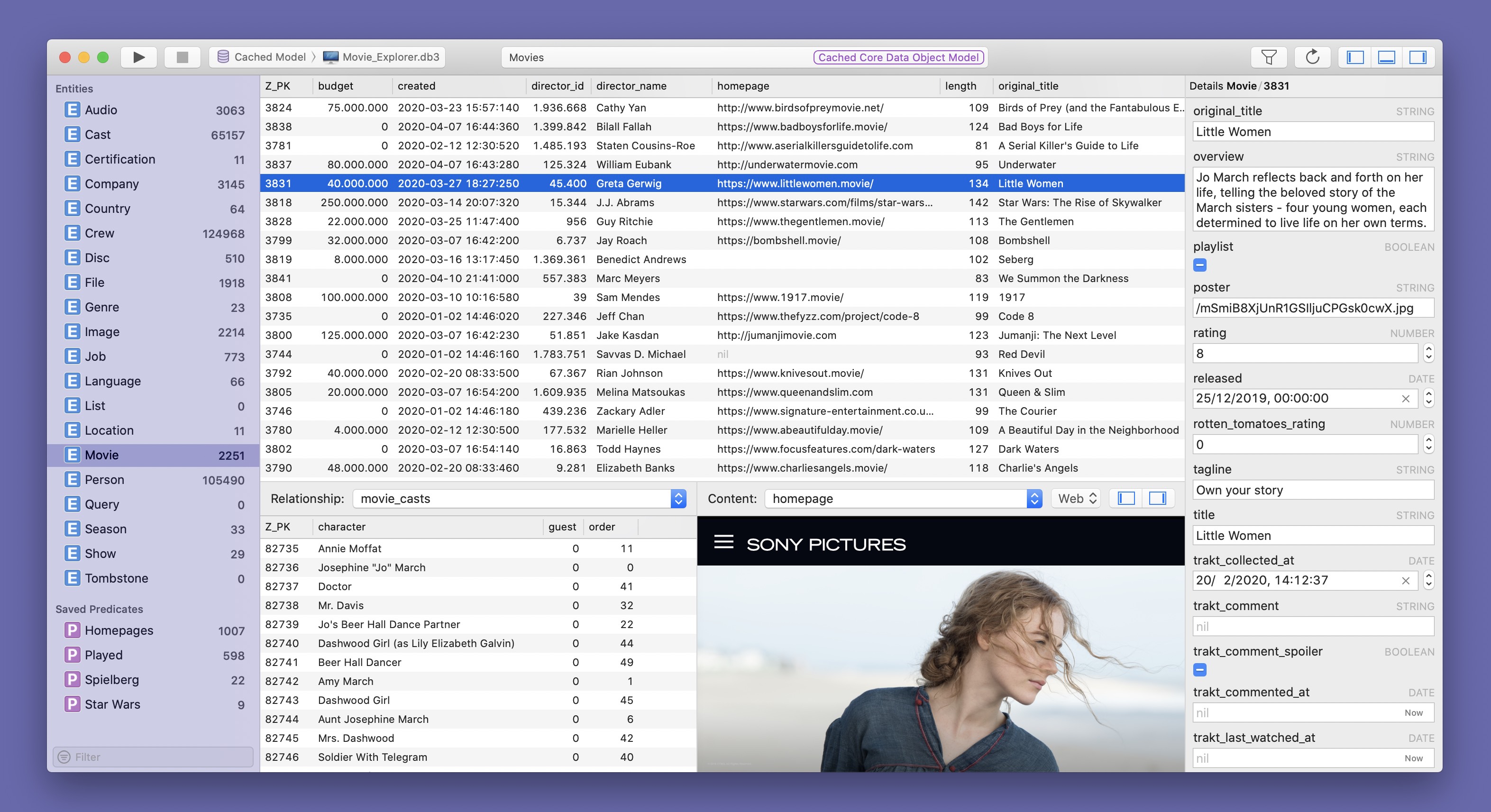
News Explorer 1.9.8 for iOS: Automatic Reader view & more
Version 1.9.8 of News Explorer for iOS and watchOS contains some useful new features, fixes and tons of small improvements.
Automatic Reader view
News Explorer now supports automatic Reader view: when enabled, News Explorer automatically chooses the correct processing for each article, in order to show the full article. This feature is based on the following two new settings:
- Default primary view is a new setting in the Reading section of the News Explorer Preferences. With this you can configure a default setting for the primary view of all your feeds. You can for example open all your feeds using Mercury Reader. This default setting can be overruled on feed level.
- Skip feeds with full articles is a new sub-setting which is available when setting Default primary view is set to Mercury Reader or Arc90 Readability. When enabled, articles of feeds with full articles are not processed by the chosen reader view engine. For example, Cult of Mac articles will be processed to retrieve the full article text, while MacRumors articles will be left alone because they are already complete.
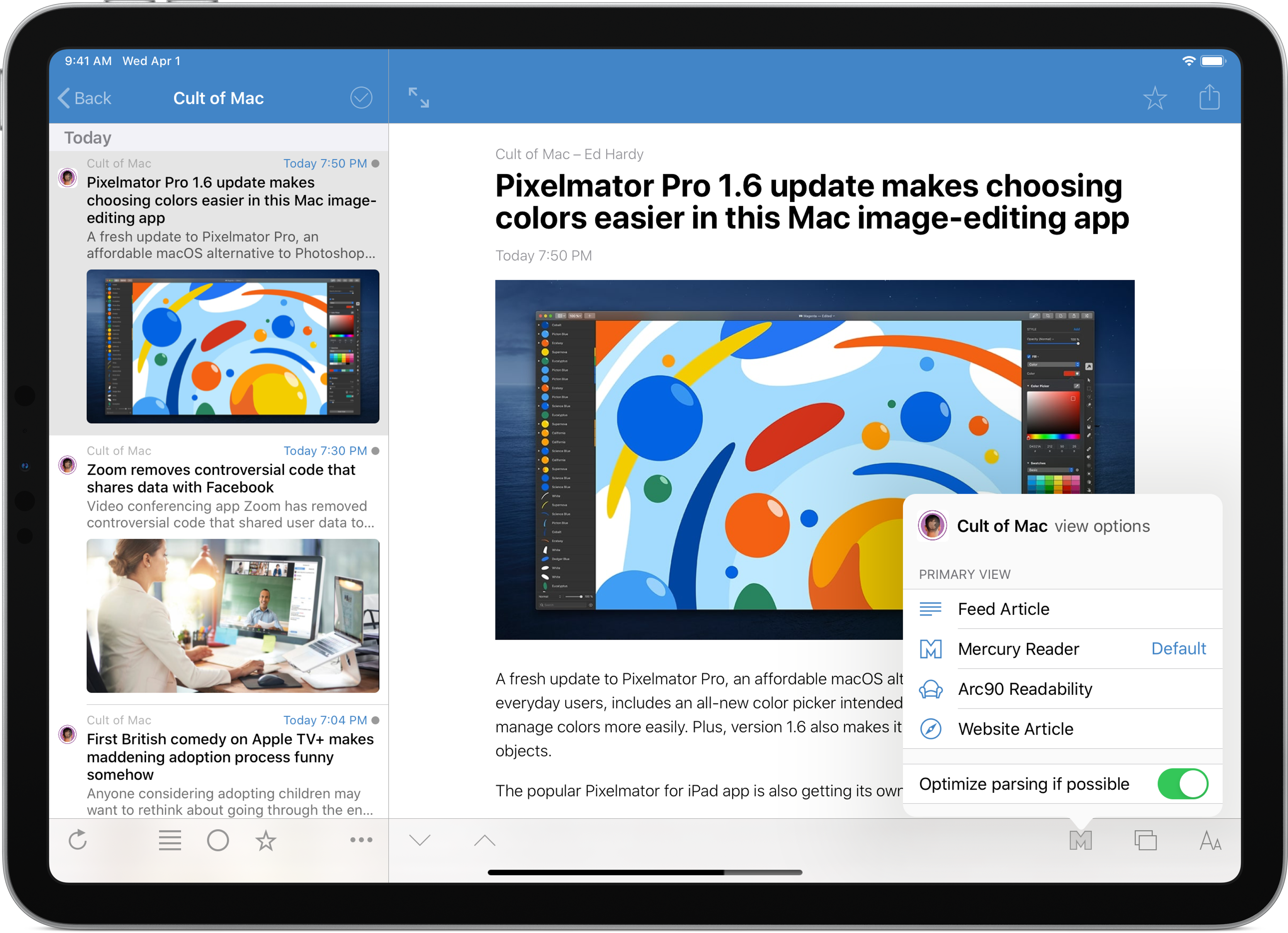
Core Data Lab 1.1, Public Beta
The introduction of Core Data Lab has been received with great enthusiasm by the Apple developer community. Especially after Dave Verwer mentioned Core Data Lab in iOS Dev Weekly, which happens to be one of the most popular newsletters for Apple developers. During this short semi-viral period we received feedback with some interesting ideas, fatal crash scenarios, several ‘glitches’, and more. This all resulted in development of version 1.1, which is a mix of some new ‘must-have’ features, some fixes to cover some exotic Core Data ‘use cases’, and new features that wouldn’t exist without the said feedback.
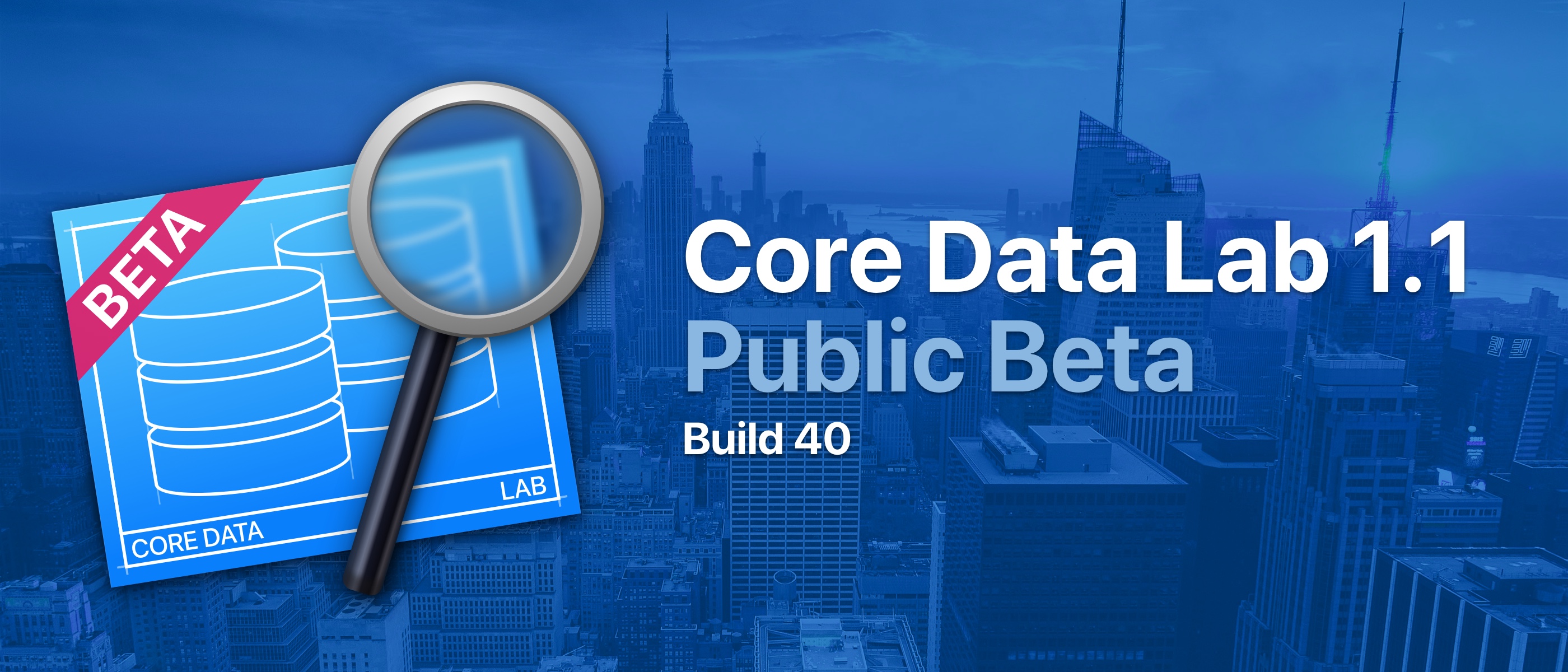
Core Data Lab, an introduction
Almost all our apps use Core Data to store all kinds of data. This means that during development, we often want to have direct access to the SQLite data from our Core Data apps, in order to check things, detect errors, diagnose problems, discover data trends, and more.
As a Core Data developer you can use regular SQLite viewers to access this data. But it is never really fun or convenient to work with these apps. They don’t know anything about the underlying Core Data Model, so they can't visualize data relationships, they display entities and fields with strange prefixes, show field values in an unpractical way. Many SQLite apps have not been maintained for years, or are not even native macOS apps, so you often have to get used to all kinds of strange GUI stuff.
There are already a few dedicated Core Data viewers. But these are often functionally limited, or have features that are already in Xcode, such as Core Data code generation, or have not been maintained for years and are therefore plagued with bugs and outdated GUI concepts.
So we started to develop a tool ourselves. Over the last few years, our in-house Core Data viewer has grown so much that it would be a waste to keep it to ourselves. So we decided to transform the tool into an attractive app for other developers, and place it on the Mac App Store for a reasonable fee. The proceeds will allow us to maintain the app properly, provide support and add new useful features.
